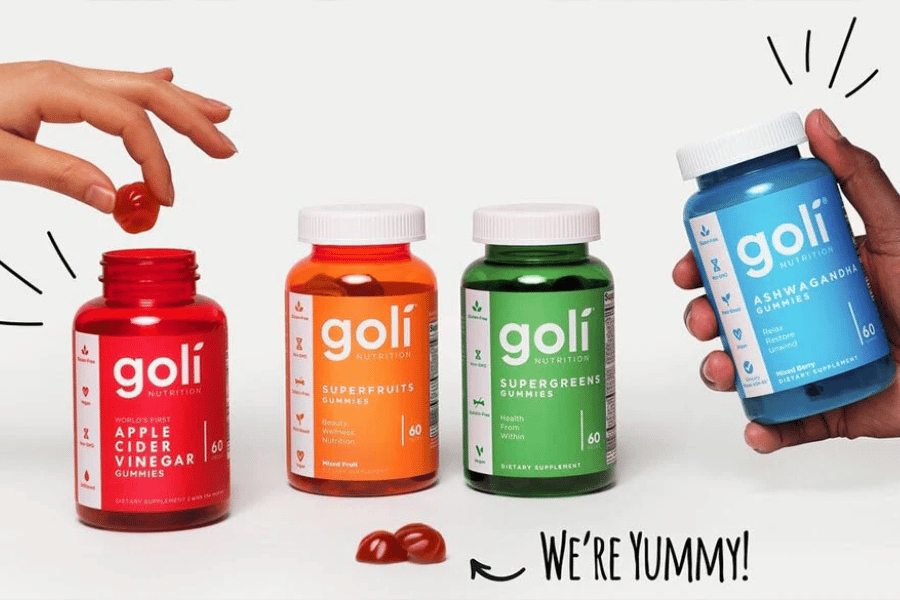When to Take Apple Cider Vinegar Gummies for Weight Loss: The 4 Best Times to Take Apple Cider Vinegar Gummies in 2024
As we navigate through the health and wellness landscape of 2024, apple cider vinegar gummies have emerged as a standout choice for those pursuing weight loss goals. Their increasing popularity is a testament to their ease of use and perceived effectiveness in supporting weight management. This article aims to shed light on the optimal times to take apple cider vinegar gummies to maximize their weight loss benefits.
These gummies, a convenient and palatable form of the traditional apple cider vinegar, have been lauded for their ability to assist in appetite control, boost metabolism, and promote fat burning. However, to fully leverage these benefits, understanding the best times to incorporate them into your daily routine is crucial.
This guide will delve into the strategic timing of consuming apple cider vinegar gummies, aligning their intake with your body’s natural rhythms and daily activities. By doing so, you can enhance their effectiveness, making them a powerful ally in your journey towards achieving a healthier weight in 2024.

The Benefits of Apple Cider Vinegar Gummies
Before delving into the best times to take them, it’s important to understand the potential benefits of apple cider vinegar gummies for weight loss. These gummies have become a popular supplement in 2024 due to their ease of use and the range of health advantages they offer.
Appetite Control: Apple cider vinegar gummies are believed to help in controlling appetite. They can create a feeling of fullness or satiety, which helps reduce overall calorie intake – a key factor in weight loss. The acetic acid in these gummies is thought to slow down stomach emptying, contributing to this effect.
Metabolism Boost: Regular consumption of apple cider vinegar gummies may aid in boosting metabolism. An increased metabolic rate means the body burns calories more efficiently, which can lead to weight loss over time.
Fat Burning: These gummies can also contribute to fat burning. The acetic acid in apple cider vinegar is known for its ability to reduce fat storage and increase fat burning, particularly in the abdominal area.
Convenience of Gummies: One of the main reasons for the popularity of apple cider vinegar gummies is their convenience. Unlike the liquid form, which can be harsh on the palate and teeth, gummies offer a more pleasant and tooth-friendly way to consume apple cider vinegar.
Understanding these benefits sets the stage for appreciating why the timing of consumption can play a crucial role in maximizing these effects for weight loss.

The Importance of Timing
Understanding when to take apple cider vinegar gummies is crucial for optimizing their effectiveness in weight loss. The timing can influence how well your body absorbs and utilizes the active ingredients, thereby impacting the overall efficacy of the supplement.
Aligning with Body’s Natural Rhythms: The body’s metabolic processes follow natural rhythms, often in sync with our daily activities and meal patterns. Aligning the intake of apple cider vinegar gummies with these rhythms can enhance their benefits, such as appetite control and metabolic boost.
Influence on Digestion and Metabolism: Taking apple cider vinegar gummies at specific times of the day can maximize their impact on digestion and metabolism. For example, consuming them before meals may improve digestive efficiency and promote a feeling of fullness, leading to reduced calorie intake.
Activity Levels and Absorption: The body’s ability to absorb and utilize nutrients varies throughout the day, often depending on activity levels. Timing the consumption of these gummies in relation to your daily activities, like exercise or rest periods, can enhance their benefits.
The 4 Best Times to Take Apple Cider Vinegar Gummies
To harness the full potential of apple cider vinegar gummies for weight loss, consider these four optimal times for consumption. Each timing is based on how your body’s natural processes can be leveraged to maximize the gummies’ benefits.
- Before Breakfast: Taking a gummy in the morning on an empty stomach can kickstart your metabolism for the day. It sets the tone for improved digestion and can help in managing appetite throughout the day, leading to better food choices and portion control.
- Pre-Workout: Consuming a gummy before your workout can provide an extra metabolic boost. The acetic acid in the gummies may enhance fat burning during exercise, making your workout sessions potentially more effective for weight loss.
- Before Lunch and Dinner: Taking a gummy before major meals can aid in appetite suppression. It helps in feeling fuller faster, which can reduce the likelihood of overeating and help in maintaining a calorie deficit for weight loss.
- At Bedtime: While less common, some find taking a gummy before bed can aid in regulating blood sugar levels overnight. Stable blood sugar levels can reduce late-night cravings and improve morning appetite control.
Rationale and Factors:
- These timings are chosen based on the body’s metabolic activities and meal patterns.
- The gummies’ appetite-suppressing and metabolic effects are best utilized when aligned with the body’s natural digestion and energy expenditure rhythms.
- It’s also important to consider individual lifestyle and daily routine when deciding on the best times for consumption.
By strategically timing the intake of apple cider vinegar gummies, you can enhance their effectiveness as part of your weight loss strategy.

Tips for Consistency
Maintaining a consistent schedule when taking apple cider vinegar gummies is key to achieving the best results in your weight loss journey. Here are some strategies to help ensure you stay on track with your supplement regimen:
Forming a Routine: Incorporate the gummies into your daily routine at the recommended times. Consistency is crucial, as it allows your body to adapt and respond more effectively to the supplements.
Setting Reminders: In our busy lives, it’s easy to forget to take supplements. Setting reminders on your phone or using a pill organizer can be helpful tools to ensure you don’t miss a dose.
Pairing with Daily Activities: Linking your gummy intake with regular daily activities, like having breakfast or preparing for a workout, can make it a natural part of your routine.
Adjusting as Needed: Listen to your body and adjust the timing if necessary. For example, if you experience any digestive discomfort, you might need to change when you take the gummies.
Tracking Progress: Keep a journal or use an app to track your supplement intake along with your diet and exercise routines. This can help you see the correlation between your regimen and your weight loss progress.
While apple cider vinegar gummies can be a valuable addition to your weight loss efforts, they should complement a balanced diet and regular physical activity. Consistency with these gummies, combined with a healthy lifestyle, increases your chances of reaching your weight loss goals.
FAQ (Frequently Asked Questions)
Q: Can taking apple cider vinegar gummies on an empty stomach cause any issues? A: While many people tolerate apple cider vinegar gummies well on an empty stomach, some may experience mild digestive discomfort. If this occurs, try taking them with food or adjusting the timing to see what works best for your body.
Q: Will apple cider vinegar gummies interact with other medications or supplements? A: Apple cider vinegar gummies can interact with certain medications, such as insulin or diuretics. It’s important to consult with a healthcare professional if you are taking any medication to ensure there are no adverse interactions.
Q: How quickly can I expect to see weight loss results from apple cider vinegar gummies? A: Results vary depending on individual factors like diet, exercise, and overall health. Consistent use of apple cider vinegar gummies, combined with a healthy lifestyle, may lead to noticeable results within a few weeks to months.
Q: Are there any long-term effects of taking apple cider vinegar gummies for weight loss? A: Apple cider vinegar gummies, when used as directed, are generally safe for long-term use. However, it’s always a good idea to periodically review your supplement regimen with a healthcare professional.
Q: Is it necessary to cycle the use of apple cider vinegar gummies, or can they be taken continuously? A: There is no general requirement to cycle the use of apple cider vinegar gummies. They can be taken continuously as part of a balanced diet and lifestyle. However, listening to your body and making adjustments as needed is always advisable.
